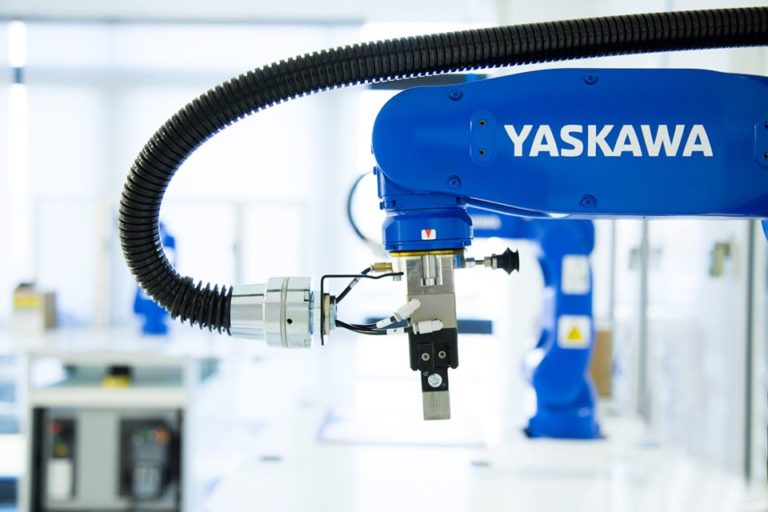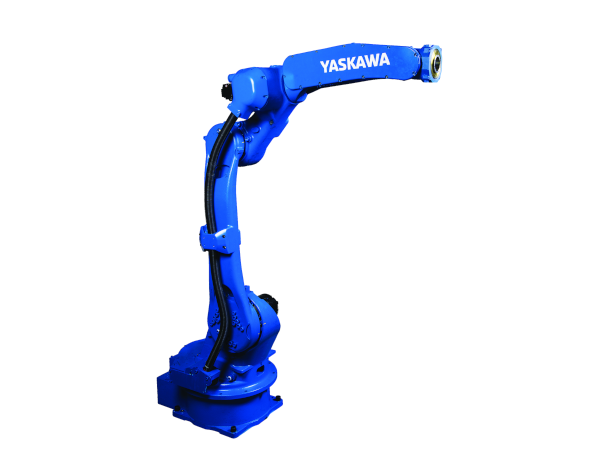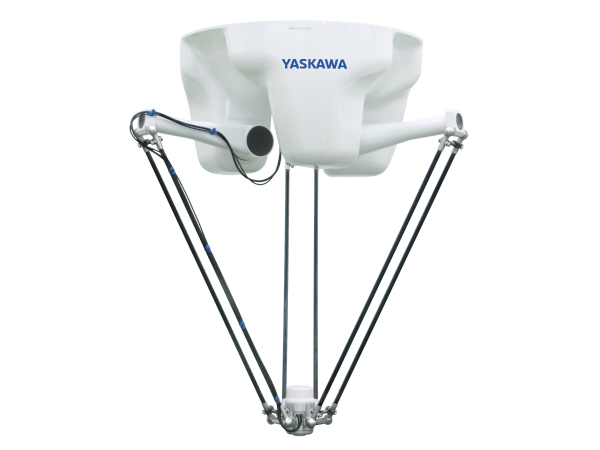Industrial and collaborative robots
Collaborative robots are used in two application scenarios: cooperation between the worker and the machine, where they share responsibilities within one task, and in their separate activities, with the person and the robot in the immediate vicinity. The most common roles of cobots are lifting, component handling, assembly, packaging and palletizing. The sizes and weights of the elements are important because the load capacity of typical collaborative robots is up to several kilograms. Additionally, the limited range and low speeds of movement make it impossible to use these machines. In all applications where the use of cobots is not possible due to their characteristics and above mentioned limitations. Alternatively, due to the limitations of cobots, our company offers industrial robots. We count the time of cycle, efficiency, ROI and many other indicators, and on their basis we select the appropriate model of robot. For many applications and industries, a typical industrial robot is statistically much more profitable during implementation and guarantees faster return on investment. The industrial robot is best suited for a cell that ensures the planned efficiency of the application and employee safety.
Our partner for both collaborative and industrial robots is Yaskawa.

Using synergy and experience in the implementation of collaborative robots in production processes related to palletization and packaging of products, and where load capacity, speeds and functionality constitute a barrier for collaborative robots, we provide individual solutions based on industrial robots. We specialize mainly in solutions related to the processes of palletization and fast product movement.
Industrial robots are used in such processes as:
Palletization
Here we use the main advantages of industrial robots, such as capacity, specifics of collective packaging, range, precision and efficiency. Based on a complete analysis of the client’s needs, the specifics of his product and development plans, we deliver ready robotic stations, enabling their immediate implementation. Their important feature is flexibility, consisting in cooperation with already operating devices, and the possibility of simple and quick adaptation to a new manufacturing profile.
Pick & place
In the processes of moving and packing single products, we focus on implementing modular applications based on Delta type robots. This type of robots is ideal when very high efficiency is expected (cycle takes less than a second), where the product is relocated at a short distance with high precision, and its weight does not exceed 8 kg.
Pick & place robots significantly accelerate processes such as picking up products or elements and placing them at their destination. They ensure high and predictable quality, resulting from the remarkable accuracy (repeatability) of movements. The advantage of pick & place robots is the possibility of replacing the effector (working tool) in order to adapt to a new product or change of technology. Easy change-over in combination with the option of quick reprogramming determines the flexibility of these systems. In addition, Delta robots can be equipped with vision systems that allow for product identification and determining its position and orientation in space, they work with conveyor belts with an in-built line tracking system or other systems based on modern cameras or vision sensors that enable, for example, color recognition, dimensions or size changes of the product.
Roboty 6-osiowe przemysłowe wykorzystujemy ze względu na ich główne zalety, jak m.in.: udźwig, zasięg, precyzja i wydajność. Do naszych aplikacji paletyzacji oraz podobnych, gdzie głównym zadaniem jest przemieszczania produktów, opakowań zbiorczych, itp. wykorzystujemy szeroką gamę robotów przemysłowych Yaskawa. Roboty Yaskawa są przeznaczone do wielu zastosowań w różnych branżach. Charakteryzują się łatwością obsługi i pełną elastycznością dzięki różnorodnym opcjom przeznaczonym do konkretnych zastosowań. Rygorystyczne normy jakościowe i japońska technologia gwarantują niezawodność. Nasze zrobotyzowane stacje paletyzacji oparte na robotach Yaskawa to nowoczesne, kompleksowe rozwiązania, przystosowane do obsługi praktycznie każdego rodzaju produktu oraz typu opakowania, bez względu na masę, kształt czy materiał, które dodatkowo wykonują różne czynności uzupełniające w niewielkiej przestrzeni roboczej. Sprawdzają się zarówno w przypadku jednorodnej produkcji o dużym wolumenie, jak i przy paletyzacji krótkich serii zróżnicowanych wyrobów. W zależności od wyboru wersji opartej na platformie automatyki przemysłowej PC i PLC, czy standardowym intuicyjnym interfejsie tabletowym HMI, każde rozwiązanie gwarantuje wysoką niezawodność maszyny, szybkie ponowne wznawianie pracy, łatwe tworzenie nowych wzorów warstw i palet oraz przyjazną i łatwą dla użytkownika obsługę.
Robot Yaskawa typu Delta to idealne rozwiązanie na końcach linii produkcyjnych, gdzie odbywa się pakowanie, konfekcjonowanie wyrobu. Przede wszystkim przemysł spożywczy, farmaceutyczny i kosmetyczny to obszary, gdzie taka konstrukcja najpełniej obrazuje przewagę nad rozwiązaniami Pick&Place opartymi o układy kartezjańskie, klasyczne roboty przemysłowe czy konstrukcje typu Scara. W odróżnieniu od klasycznych rozwiązań opartych na robotach osiowych, scara czy kartezjańskich, roboty typu delta zapewniają dużą wydajność dzięki niewielkiej własnej bezwładności ultralekkich ramion robota mogących pracować na dużych prędkościach w cyklu ciągłym bez ryzyka przegrzania czy przyspieszonego zużycia elementów roboczych. Otwarta konstrukcja delta robota to również znacznie łatwiejsze serwisowanie, a co za tym idzie wyższe bezpieczeństwo ciągłości procesu.


